Charles Taze Russell (1852-1916), often referred to as “Pastor Russell,” founded what would eventually evolve into the Jehovah’s Witnesses organization. As the founder of the Bible Student movement and president of the Watch Tower Bible and Tract Society, Russell became one of the most influential religious figures of the late 19th and early 20th centuries. His prolific writing, apocalyptic predictions, and controversial interpretations of scripture left an indelible mark on American religious history, though not without significant criticism and controversy.[1]
Early Life and Influences
Born on February 16, 1852, in Allegheny, Pennsylvania (now part of Pittsburgh), Russell was raised in a devout Presbyterian household. His religious journey began early when, as a teenager, he struggled with traditional Christian doctrines, particularly the concept of eternal hellfire.[2] This theological discomfort led him to question his faith before eventually encountering Adventist teachings.
In 1870, at only 18 years old, Russell formed a Bible study group in Pittsburgh, beginning his path as a religious leader. Significantly influenced by Adventist preacher Jonas Wendell and George Storrs’ teachings on conditional immortality, Russell developed his unique theological framework that rejected many orthodox Christian doctrines.[3]
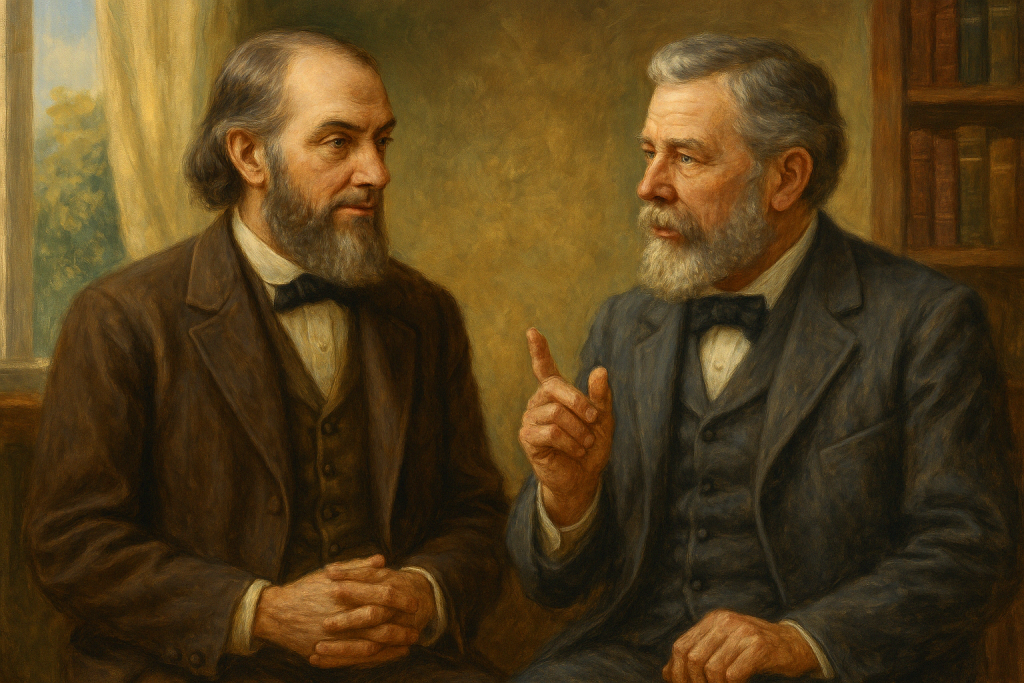
Russell was particularly influenced by Nelson H. Barbour, an Adventist who convinced him that Christ’s invisible return had already begun in 1874. Their collaboration ended in 1879 over doctrinal disagreements, prompting Russell to establish his own publication, Zion’s Watch Tower and Herald of Christ’s Presence, the precursor to today’s The Watchtower.[4]
Key Beliefs and Teachings
Russell’s theological system diverged significantly from mainstream Christianity in several ways:
- Rejection of the Trinity: Russell denied the doctrine of the Trinity, arguing that Jesus was a created being—specifically, the archangel Michael in human form—and not equal to God.[5]
- Soul Sleep and Annihilationism: He rejected the concept of an immortal soul and eternal punishment, instead teaching that the dead are unconscious (“soul sleep”) and that the wicked would be completely destroyed rather than eternally tormented.[6]
- Invisible Presence: Russell taught that Christ’s second coming was not a physical, visible event but an invisible “presence” that had begun in 1874.[7]
- The Divine Plan of the Ages: His seven-volume series Studies in the Scriptures outlined what he called “The Divine Plan of the Ages,” a complex chronological framework for understanding biblical prophecy and human history.[8]
- Pyramidology: Perhaps most controversially, Russell believed that the Great Pyramid of Giza was built under God’s direction and served as a “Bible in stone” that confirmed his prophetic calculations.[9]
| Doctrine / Practice | Orthodox Christianity First Century to Today | Protestant Christianity 1517 to Today | Charles T. Russell Era 1876 to 1916 | Rutherford and Modern Era 1916 to Today |
| Trinity | ✅ Affirmed | ✅ Affirmed | ❌ Rejected | ❌ Rejected |
| Hellfire / Eternal Torment | ✅ Affirmed (spiritual separation) | ✅ Affirmed | ❌ Rejected | ❌ Rejected |
| Jesus’ Return | ✅ Visible, future event | ✅ Visible, future event | ✅ Invisible return in 1874 | ✅ Invisible return in 1914 |
| Cross | ✅ Holy symbol of salvation | ✅ Common Christian symbol | ✅ Accepted | ❌ Rejected — claim Jesus died on a stake |
| Bible Version | Uses Septuagint, Orthodox Bible | Uses various (KJV, ESV, NIV) | Preferred KJV , studied Greek | Only New World Translation (NWT) |
| Holidays & Birthdays | ✅ Celebrated (e.g., Easter, Christmas) | ✅ Celebrated | ✅ Celebrated Christmas and birthdays | ❌ Forbidden entirely |
| Clergy & Structure | Hierarchical (bishops, patriarchs) | Pastors, elders, deacons | No formal clergy; Russell as “Pastor” | Strict Governing Body control |
| Religious Identity | Ancient Church Tradition | Denominational (e.g., Baptist, Methodist) | “Bible Students” | “Jehovah’s Witnesses” (1931 onward) |
| Blood Transfusions | ✅ Permitted | ✅ Permitted | ❓ Not addressed | ❌ Forbidden — leads to disfellowshipping |
| Beards | ✅ Common among clergy | Varies by denomination | ✅ Worn by Russell & early leaders | ❌ Discouraged — seen as unclean/unofficial |
| Government Participation | ✅ Allowed | ✅ Allowed | Neutral | ❌ No voting, flag salute, or military |
| Disfellowshipping / Shunning | Rare; handled by synod | Varies; usually pastoral discipline | ❌ Not practiced | ✅ Enforced shunning of former members |
| Doctrinal Debate Allowed? | ✅ Yes, within boundaries | ✅ Often encouraged | ✅ Encouraged peer study | ❌ Forbidden — considered apostasy |
| Child Abuse Handling | Reported to state | Reported to state | N/A | ❌ Internal handling, criticized for 2-witness rule |
| Higher Education | ✅ Encouraged | ✅ Encouraged | Neutral | ❌ Strongly discouraged |
| Use of God’s Name (“Jehovah”) | Rarely used; prefers “Theos,” “Kyrios” | Common in prayer or study | ✅ Used often | ✅ Central — name-based identity |
Failed Predictions and Questionable Calculations
Russell’s prophetic calculations and predictions form one of the most criticized aspects of his legacy. His approach combined selective biblical interpretation with dubious mathematical calculations:
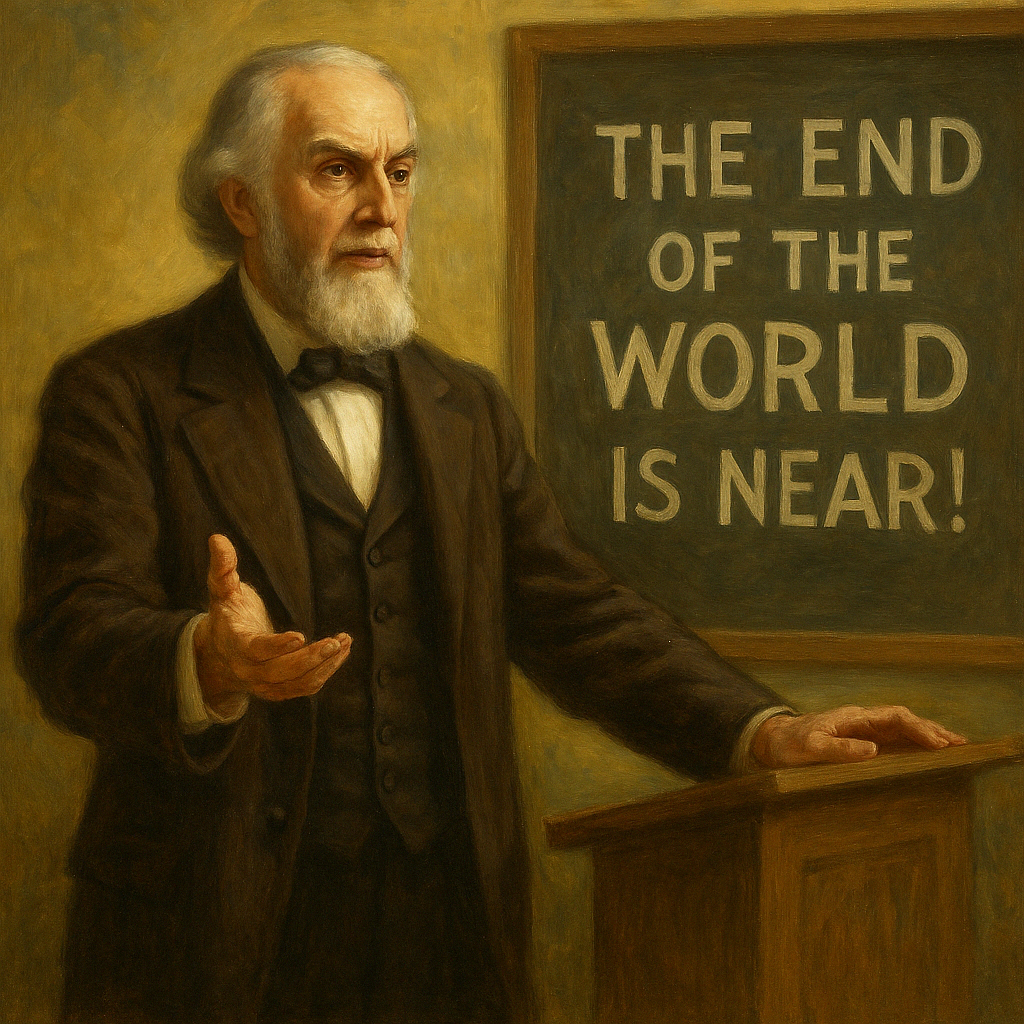
The 1874/1914 Predictions
Russell’s most famous prediction concerned 1914, which he originally calculated would mark the end of the “times of the Gentiles” and the beginning of Armageddon. This date was derived through a series of questionable calculations:
- Starting with the destruction of Jerusalem, which Russell incorrectly dated to 606 BCE (modern scholarship places it at 587/586 BCE)
- Applying the “seven times” punishment from Daniel 4, which he interpreted as 2,520 years (7 × 360 days)
- Counting 2,520 years from 606 BCE brought him to 1914 CE[10]
Prior to settling on 1914, Russell had endorsed 1874 as the date of Christ’s invisible return, based on Barbour’s calculations. When that year passed without visible apocalyptic events, Russell maintained that Christ had indeed returned invisibly, beginning a 40-year “harvest period” culminating in 1914.[11]
Pyramidology and Prophetic Dating
Russell’s use of the Great Pyramid’s measurements to confirm biblical chronology represents perhaps his most peculiar methodology. In Thy Kingdom Come (1891), the third volume of Studies in the Scriptures, Russell argued that various passages and chambers in the pyramid, when measured in “pyramid inches,” corresponded exactly to his biblical timeline.
For example, he claimed that measuring 2,520 inches along a specific passage confirmed his calculation of 2,520 years for the “times of the Gentiles.” Modern scholars consider this methodology pseudo-scientific and arbitrary, as it required selective interpretation of which measurements to use and how to correlate them with biblical events.[12]
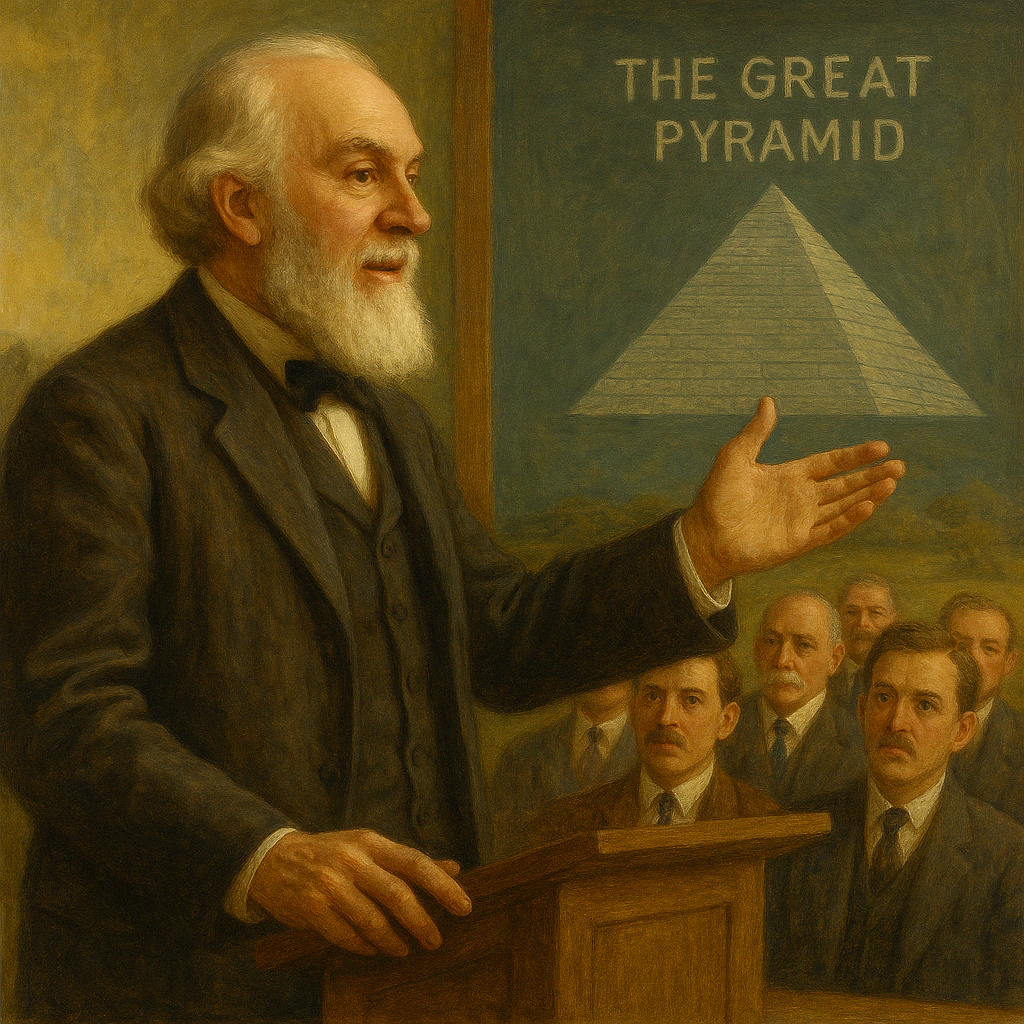
The Aftermath of Failed Predictions
When 1914 arrived, World War I began, which Russell interpreted as the beginning of Armageddon, temporarily vindicating his predictions. However, his prophecy that 1914 would see the complete overthrow of human governments and the establishment of God’s kingdom failed to materialize. Russell died in 1916, still anticipating the imminent completion of these events.[13]
After his death, the Watch Tower Society, under Joseph Franklin Rutherford’s leadership, revised many of Russell’s chronological interpretations while maintaining the significance of 1914 as the beginning of Christ’s invisible presence (adjusted from the previous 1874 date).[14]
Criticism and Controversies
Beyond his failed predictions, Russell faced numerous criticisms and controversies:
Academic and Theological Criticism
Despite positioning himself as a biblical scholar, Russell had limited formal education and no training in biblical languages or theology. Critics, including contemporary theologians, pointed out his misunderstandings of Greek and Hebrew texts and his selective use of scripture.[15]
In 1912, The Brooklyn Daily Eagle published an exposé revealing that Russell had falsely claimed to understand Greek, having failed to correctly identify Greek letters during a court cross-examination.[16]
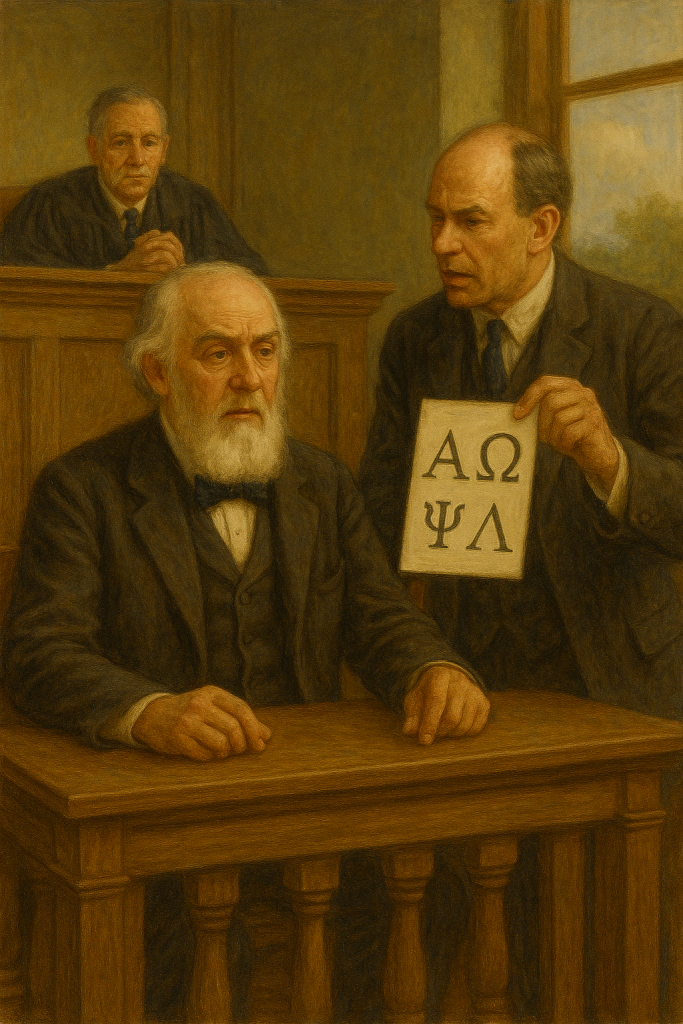
The “Miracle Wheat” Controversy
In 1911, Russell became embroiled in the “Miracle Wheat” scandal. The Watch Tower promoted the sale of a supposedly superior strain of wheat at $60 per bushel (regular wheat sold for about $1 per bushel). After the Brooklyn Daily Eagle criticized this as a fraudulent scheme, Russell sued for libel but lost when scientific testimony confirmed the wheat had no special properties.[17]
Personal Life and Marital Problems
Russell’s marriage to Maria Frances Ackley ended in separation in 1897, followed by a controversial divorce in 1908. During divorce proceedings, Maria made serious allegations against Russell, including claims of controlling and inappropriate behavior with other women. The public nature of these proceedings damaged Russell’s reputation.[18]
“Pastor” Title Controversy
Although commonly called “Pastor Russell,” critics noted that he had never been ordained by any recognized religious body. The title was self-assumed or given by his followers rather than representing formal theological training or ordination.[19]
Legacy and Influence
Despite the controversies, Russell’s influence remains significant. His organization evolved into the Jehovah’s Witnesses, currently claiming over 8.5 million active members worldwide. While today’s Witnesses have modified many of Russell’s teachings, core elements remain, including the rejection of the Trinity, soul sleep, and the emphasis on an imminent end of the current world system.[20]
Russell’s approach to biblical interpretation—combining literal-ism with complex chronological speculation—established a pattern followed by numerous apocalyptic movements throughout the 20th century. His emphasis on publishing and distribution created a model for religious outreach that the Jehovah’s Witnesses continue to employ with remarkable success.[21]
Final Thoughts
Charles Taze Russell stands as a fascinating study in religious entrepreneurship and apocalyptic thought. His legacy demonstrates both the power of religious innovation and the perils of prophetic speculation. Russell’s failed predictions and questionable methodologies serve as cautionary examples of how mathematical formulas and esoteric interpretations can lead to repeated disappointments when applied to apocalyptic prophecy.
Nevertheless, his organizational achievements and publishing innovations created an enduring religious movement that has far outlived both him and his failed predictions. Modern scholarship views Russell as an important figure in American religious history whose influence extends beyond the organization he founded to shape broader conversations about millennial-ism, biblical interpretation, and religious publishing.[22]
Charles Taze Russell died on October 31, 1916, while traveling by train near Pampa, Texas, during a cross-country speaking tour. Following his death, he was buried in the United Cemetery (formerly Rosemont United Cemetery) in Ross Township, near Pittsburgh, Pennsylvania. A notable pyramid-shaped monument, erected by his followers shortly after his burial, stands near his grave site and has drawn both interest and controversy due to its symbolic design.
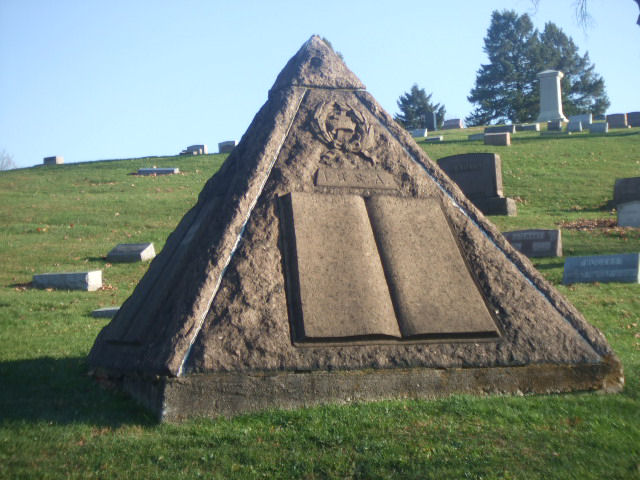
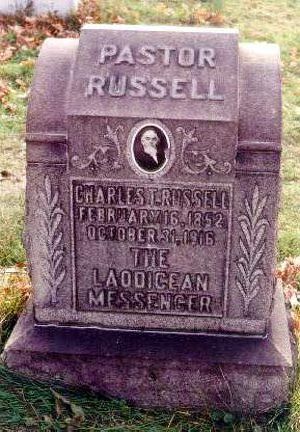
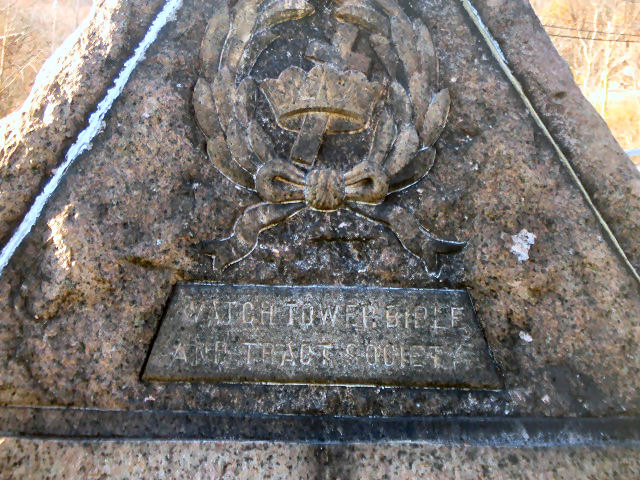
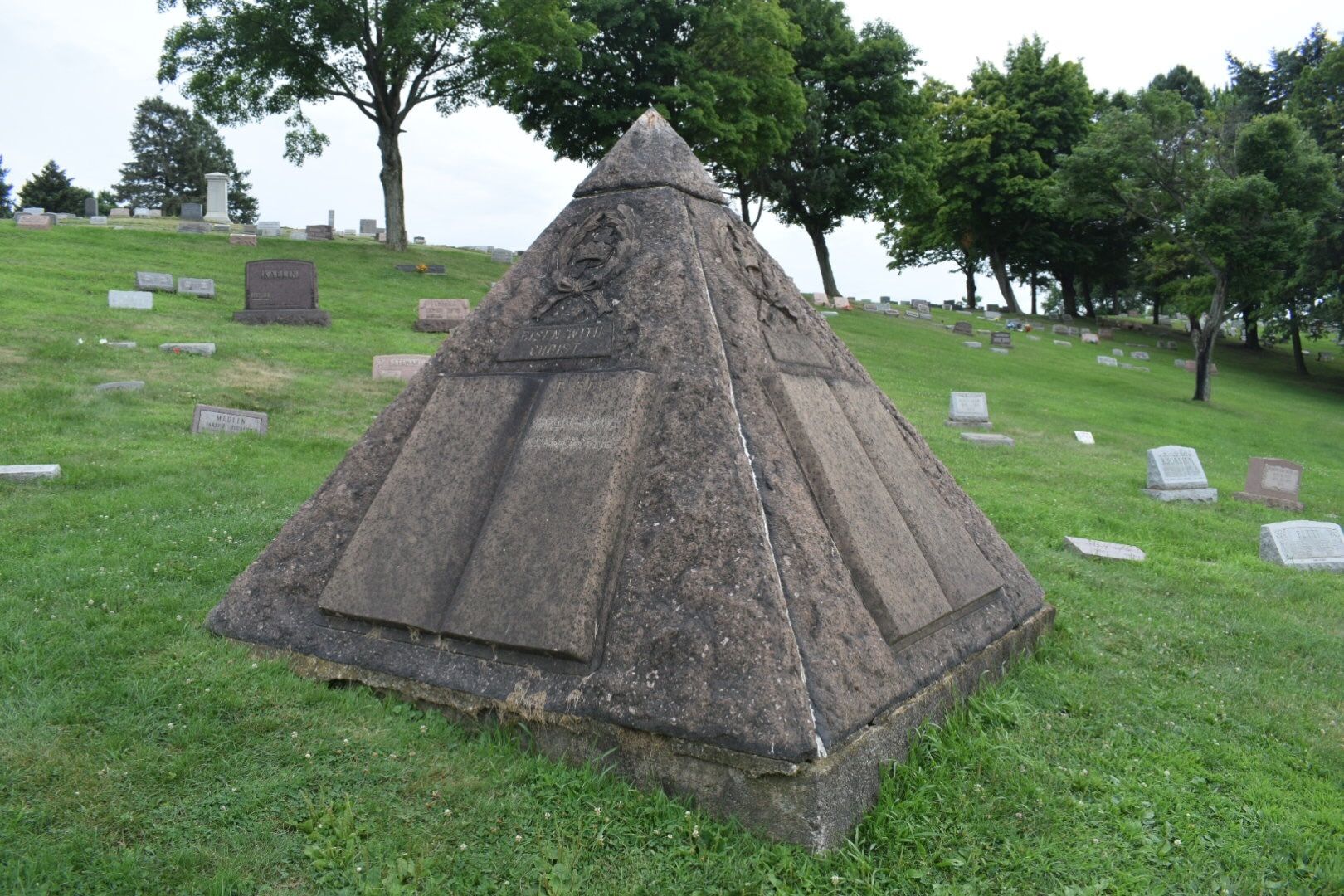
Next page, we discuss what happened to the Bible Study group after his death.
[ Next Page – Big Organizational Split ]
References:
[1] M. James Penton, Apocalypse Delayed: The Story of Jehovah’s Witnesses, 3rd ed. (Toronto: University of Toronto Press, 2015), 14-42.
[2] A. H. Macmillan, Faith on the March (Englewood Cliffs, NJ: Prentice-Hall, 1957), 26-27.
[3] James A. Beckford, The Trumpet of Prophecy: A Sociological Study of Jehovah’s Witnesses (Oxford: Basil Blackwell, 1975), 2-5.
[4] Barbara Grizzuti Harrison, Visions of Glory: A History and a Memory of Jehovah’s Witnesses (New York: Simon and Schuster, 1978), 34-36.
[5] Charles Taze Russell, Studies in the Scriptures, Vol. 5: The At-one-ment Between God and Man (Allegheny, PA: Watch Tower Bible and Tract Society, 1899), 83-86.
[6] Charles Taze Russell, Studies in the Scriptures, Vol. 1: The Divine Plan of the Ages (Allegheny, PA: Watch Tower Bible and Tract Society, 1886), 154-155.
[7] Charles Taze Russell, Studies in the Scriptures, Vol. 2: The Time is at Hand (Allegheny, PA: Watch Tower Bible and Tract Society, 1889), 101-104.
[8] Penton, Apocalypse Delayed, 24-28.
[9] Charles Taze Russell, Studies in the Scriptures, Vol. 3: Thy Kingdom Come (Allegheny, PA: Watch Tower Bible and Tract Society, 1891), 313-376.
[10] Joseph F. Rutherford, The Finished Mystery (Brooklyn, NY: Watch Tower Bible and Tract Society, 1917), 53-60.
[11] Robert R. Crompton, Counting the Days to Armageddon: Jehovah’s Witnesses and the Second Presence of Christ (Cambridge: James Clarke & Co., 1996), 30-36.
[12] Martin Gardner, Fads and Fallacies in the Name of Science (New York: Dover Publications, 1957), 174-180.
[13] Timothy P. Weber, Living in the Shadow of the Second Coming: American Premillennialism, 1875-1925 (Chicago: University of Chicago Press, 1987), 153-156.
[14] William Schnell, 30 Years a Watch Tower Slave (Grand Rapids, MI: Baker Book House, 1956), 52-53.
[15] Walter R. Martin, The Kingdom of the Cults (Minneapolis: Bethany House Publishers, 2003), 55-87.
[16] “Russell on the Stand,” Brooklyn Daily Eagle, March 1912.
[17] “Court Decides ‘Miracle Wheat’ is Inferior to Ordinary Wheat,” Brooklyn Daily Eagle, January 1913.
[18] Penton, Apocalypse Delayed, 45-48.
[19] Edmund C. Gruss, The Jehovah’s Witnesses and Prophetic Speculation (Nutley, NJ: Presbyterian and Reformed Publishing Co., 1972), 12.
[20] 2021 Yearbook of Jehovah’s Witnesses (Wallkill, NY: Watchtower Bible and Tract Society of New York, 2021), 30-33.
[21] Zoe Knox, Jehovah’s Witnesses and the Secular World: From the 1870s to the Present (London: Palgrave Macmillan, 2018), 10-28.
[22] Paul Boyer, When Time Shall Be No More: Prophecy Belief in Modern American Culture (Cambridge, MA: Harvard University Press, 1992), 90-92.
